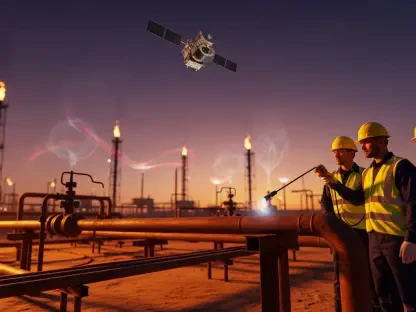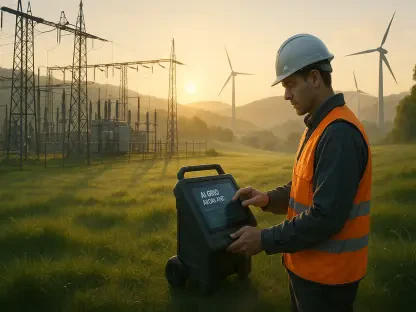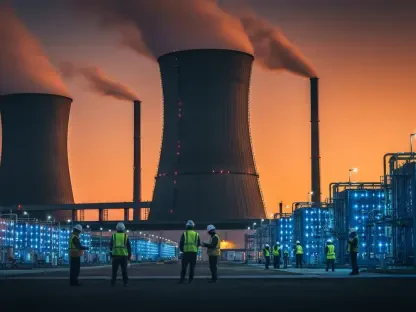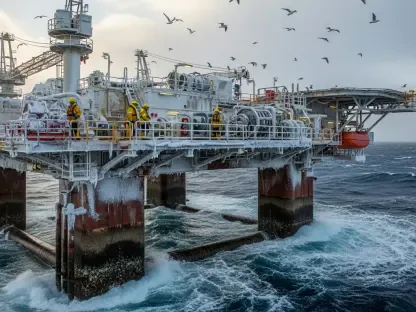In today’s rapidly evolving energy landscape, few voices offer as much insight as Christopher Hailstone. With a wealth of experience in energy management and infrastructure development, Christopher is uniquely positioned to shed light on the forces shaping India’s surge in electricity demand and the broader implications for renewable energy and grid reliability.
India is witnessing a transformative period in its energy sector, largely driven by electric vehicles, green hydrogen, and burgeoning data centers. Christopher provides his expert insights into how these factors intersect with national policy, economic growth, and infrastructure advancements. This interview invites readers to explore deeply into these themes, understanding both challenges and opportunities within India’s dynamic energy market.
How significant are electric vehicles, green hydrogen, and data centers in driving the surge in India’s electricity demand between FY2026 and FY2030?
Electric vehicles, green hydrogen, and data centers are pivotal to India’s rising electricity demand. They collectively contribute 20-25% of this increase. EVs continue to grow in adoption, spurring power needs for charging infrastructure. In parallel, green hydrogen—despite its current cost challenges compared to gray hydrogen—has the potential to drive significant demand as industries aim to decarbonize. Data centers are expanding rapidly due to the digital transformation, adding substantial load to the grid.
What is the projected annual growth rate for electricity demand in India over the next five years?
The electricity demand in India is forecasted to grow by 6-6.5% annually over the forthcoming five years. This sustained growth aligns with the country’s increasing industrialization and urbanization, alongside ambitions for clean energy adoption. While the numbers point to robust demand, it’s critical to keep an eye on infrastructure developments ensuring this demand is met efficiently.
Why is the expected electricity demand growth for FY2026 slightly lower than the forecasted GDP growth?
The expected electricity demand growth for FY2026 is slightly lower than GDP projections due to factors like the monsoon. The early onset of monsoon typically reduces power needs for cooling and agriculture, skewing the energy calculations. This phenomenon highlights how seasonal patterns can influence year-on-year energy consumption, occasionally creating a divergence with broader economic trends.
Can you explain the relationship between the onset of the monsoon and its impact on electricity demand?
Monsoon arrival directly impacts electricity demand by reducing needs for both agricultural irrigation and cooling. During heavy rains, agricultural fields become naturally watered, cutting electricity consumption tied to pumping. Similarly, cooler temperatures diminish the demand for air conditioning. This seasonal dip demonstrates climate’s significant role in energy planning.
How does the predicted FY2026 electricity demand growth compare to the trends seen from FY2022 to FY2025?
FY2026 is expected to see a demand growth rate that surpasses the 4.2% of FY2025. Despite being below the booming 8% observed from FY2022 to FY2024, it reflects stabilization post-pandemic—and the effects of economic recalibration. This progression suggests resilience and adaptation in consumer and industrial energy use patterns amidst evolving economic conditions.
What is the expected thermal power plant load factor (PLF) for FY2026, and how does this compare to previous years?
The thermal power plant load factor for FY2026 is anticipated to remain steady at around 70%. Such consistency reflects both ongoing reliance on thermal power and advancements in grid technology. While renewables are increasing in share, thermal power retains a strong foothold through innovations, ensuring robust and reliable energy supply.
How will renewable energy sources contribute to meeting the electricity demand in FY2026?
Renewables are projected to play a significant role in meeting FY2026 demand, supported by government initiatives and increasing investments. Wind, solar, and hybrid energy sources will account for substantial new capacity additions, reflecting their growing importance in India’s energy strategy and commitment to reducing carbon footprints.
What role do government schemes like the Pradhan Mantri Surya Ghar Yojana play in offsetting grid-connected electricity demand?
Programs such as the Pradhan Mantri Surya Ghar Yojana support the adoption of rooftop solar and off-grid solutions, thus alleviating traditional grid reliance. These schemes catalyze individual energy generation, empowering consumers through solar technologies, and contributing to energy decentralization. Such measures are pivotal in India’s smart and sustainable energy future.
What is the forecast for EV adoption across different categories, and which category is expected to lead the growth?
India’s EV adoption is expected to soar across all categories, with three-wheelers leading the charge. This segment’s affordability and urban mobility efficiency make it an attractive option. Two-wheelers, electric buses, and passenger cars follow suit, each poised for growth due to supportive policies and improving infrastructural backing.
Given the current cost disadvantage of green hydrogen compared to gray hydrogen, what factors might influence the gradual scale-up of green hydrogen?
The gradual scale-up of green hydrogen is influenced by both technological advancements and economies of scale. As research and development foster improvements in production efficiencies and cost reductions, green hydrogen becomes economically viable. Regulatory support, market incentives, and international collaboration also play critical roles in accelerating this transition.
In what ways is the Indian government supporting the expansion of renewable and thermal generation capacity, and how is this reflected in current projects?
The Indian government’s backing, visible in new project announcements and long-term power purchase agreements, signifies robust support for expanding renewable and thermal generation. These strategies are indicative of a proactive stance towards energy security—through practical backing of infrastructure modernization and capacity enhancements, ensuring consistency in power availability.
How does the projected addition of power generation capacity for FY2026 compare to previous records?
For FY2026, India is projected to add a remarkable 44 GW of power generation capacity, surpassing the previous high of 34 GW. This significant increase marks a historical advancement, reflecting commitment to meet both immediate and future electricity demands through expansive infrastructural and technological developments.
What proportion of the new installed capacity by March 2026 is expected to come from renewable sources versus thermal sources?
As of March 2026, the majority of the new installed capacity is slated to come from renewable sources. This shift highlights India’s progressive march toward sustainable energy practices, aiming for a cleaner future while balancing advancements in thermal power with ongoing project completions.
What are some specific examples of the national infrastructure efforts mentioned, such as those led by Minister Nitin Gadkari?
Minister Nitin Gadkari’s initiatives, particularly in modernizing highways, illustrate how infrastructure complements energy advancement. These efforts underpin economic growth, facilitating smoother logistics and transportation—as well as hinting at interconnected policy strategies crucial in nurturing industry and sustainable endeavors.
How are the developments in India’s energy sector connected to the broader economic transformation, including the emergence of mid-sized companies?
The burgeoning energy sector is intertwined with India’s broader economic transformation characterized by thriving mid-sized companies. These enterprises are driving innovation, agile enough to capitalize on opportunities presented by energy evolution—signifying a diversifying economy that increasingly values sustainability and technological prowess.
What is your forecast for India’s energy sector developments?
Looking ahead, India’s energy sector is poised for dramatic changes as renewable adoption scales, grid enhancements continue, and policies increasingly favor sustainability. The convergence of technological advancements and strategic investments suggests an increasingly resilient and eco-friendly landscape, with increasing global integration and leadership in innovative energy practices.









